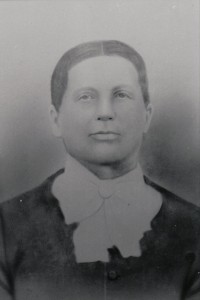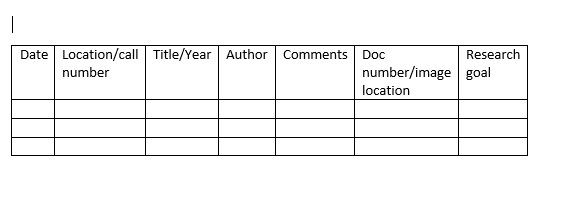Research logs are important and serve a useful genealogical purpose. Sometimes they are not enough.
Research logs should search specific and usually include spaces for the title of the source, where/how the source was accessed, what names were searched for in the source, what was found, etc. Those are details that one needs to track to avoid repeating searches, to recognize when sources have been overlooked, and so that alternate forms of the same source can be referenced when necessary. Alternate forms are sources are occasionally necessary when one has originally consulted a transcription and a “truer” copy ends up being available.
There are times when I need another list. A list of “why.”
I’ve got a research log of things I have done in an attempt to find the origins of my Anne (Murphy) Neill. Like any research log it lists the sources I have used, how they were accessed, etc. Records on Anne are scant and none of them list her parents or any specific place of birth (“Ireland” is as specific as it gets). Anne was not the only Anne Murphy born in Ireland around 1840 so searching for her has required diligence.
What I need in addition to my research log is a list of methodologies I’ve tried in order to locate clues to her origins. Researching her fully is an obvious way to try and locate her origins, but it did not do the trick. Other approaches that have been tried need to be tracked for the same reason that I keep a research log: so I do not try the same thing repeatedly and so that I can tweak those unsuccessful approaches if necessary.
To do that, I’ve created a methodology list.
For Anne (Murphy) Neill, I have the following methodology list:
- Looked for any Irish native with the last name of Murphy living with in an approximate eight mile radius of where Anne settled in Illinois.
- Researched the origins of the bondsman who appeared on her 1864 marriage to Samuel Neill in New Brunswick.
- Viewed the death certificates of all Anne’s children to see if a specific place of birth is provided.
The specifics of these searches should go on my research log–not here. The methodology list is meant to be more general so that I can review the approaches that have been tried. The research log can be referenced to then see the specific tasks that were done as a part of a specific methodology. I could keep a separate research log for each methodology, but that’s not really necessary.
The easiest way to incorporate this into my research log is to create a table or a spreadsheet to be used as my research log–instead of using one of the created forms that abound on the internet. This table ro spreadsheet can be sorted based upon any column. I should enter the “research goal” consistently in each entry to which it applies. Then the chart can be sorted by research goal in order for me to see what searches were conducted in an attempt to meet that goal. The three methodologies listed for Anne could easily be abbreviated on my research log as:
- Find Illinois Murphys
- Research marriage bondsman
- Children’s death certificates
Putting the research goals on the research log just allows me to understand why a certain record was searched. When I review my research six days or six months later, I may forget why a certain record was searched. I usually don’t put any goals for records that are specifically on Anne or her husband as the reason behind locating them should be obvious. Sorting by research goal on my chart lets me see what was done for each goal, even if I prefer to normally use the log in chronological fashion.



5 Responses
Thanks for this advice. I have just started researching my Irish ancestors and I seem to being going around and around in circles and not getting anywhere, so I intend to use your advice and become a lot more methodical about my approach and hopefully will manage to break through some brick walls.
You are welcome. There are never any guarantees, but I too have felt that I was going in circles and realized that approach was not going to work
What a coincidence! As I sat down this morning to review my emails, I was thinking of my 1754 immigrant ancestor and the difficulty I’ve had locating his place of origin. I was debating if I needed to write a list of strategies to follow that might help me locate this when I came upon your post in my email inbox. The added bonus is now I know how to “tie” it to my research log spreadsheet! Thank you, Michael for everything you do to advance the cause of family history and genealogy research.
Thank you, Sherry.
I’m glad you found it helpful.
It just makes searching easier for me if I know why I’m doing what I’m doing. As mentioned in the post, sometimes it is obvious what the reason for doing something was, but other times it is not.
I assume by now you have tried other approaches. What about immigration or passports. The only way I found my great-grandfather’s place of birth in Germany was through his son’s passport application. As to the Irish, much more difficult. In the county of my great-grandfather’s birth, there are at least 8 men of the same name; knowing his father’s name isn’t any help as there are 15 with that name. Smiths are as common in Ireland as they are in the States